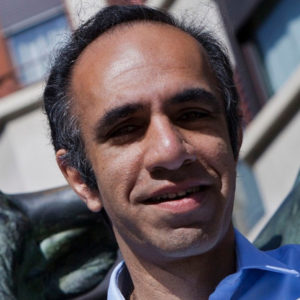The forecast for many institutional investors around the world this year is that it will be even more difficult to achieve fixed income security yields to help meet their target returns. Even though short-term rates are going up, intermediate and longer-term rates are expected to continue at historically low yields meaning that investors who focus on such debt instruments must urgently look for alternative assets to fill their unwavering demand for yield with lower volatility.
According to Neuberger Berman’s Fixed Income Strategy Committee’s recent report, “interest rates across the curve are expected to remain well below historical levels in 2018 and beyond, in keeping with post-crisis trends. As such, the search for yield will continue to drive investors toward creative fixed income solutions and into corners of the financial markets to which exposures have been limited or even nonexistent.” In particular, they state that “With persistently low yields and ever-evolving global regulatory standards, insurance companies are continually tasked with identifying creative solutions in an effort to support their liabilities and contribute to overall profitability.” Corwin (Cory) Zass, Founder and Principal Consulting Actuary of Actuarial Risk Management in Austin, Texas says that over the last year his firm has received calls inquiring about longevity-based investments. Zass states “at the moment, outside of certain catastrophic mortality bonds, there are few debt instruments betting on mortality events, so an opportunity exists for a properly designed offering underpin with the likes of life settlements or structured settlements.” Zass cautioned that the law of large numbers is important (in terms of persons) and that mortality events do not follow a strict path. As for ideal buyers of such instruments, Zass further said, “life insurers already have expertise with mortality and need yield”.
London listed innovative alternative asset specialist Alpha Growth plc, (LSE: ALGW, www.algwplc.com), has developed a hybrid security collateralized by US life settlements, providing an attractive risk yield over a 10-year term with minimal correlation, compared with other fixed income and asset classes. It is called a High Yield Return (HYR) security – a debt equity hybrid investment, coupled with prudent risk management and high-quality supporting collateral that provides diversity and safety in return.
Alpha Growth plc developed HYR after surveying financial institutional investors who were highly regulated and generally disciplined in their investment methodology. The target audience was insurers looking for an offering with minimally correlated returns and higher predictable cash flows; yet with minimal impact on their regulatory capital requirements. After conducting a thorough review of the detailed HYR model that included various stress testing, a big four accounting firm mandated with reviewing the Solvency II implications and other items, concluded that regulated insurers under Solvency II could generate Matching Adjustment (MA) compliant assets with significant capital saving from HYR compared to an equivalent BBB bond.
Alpha Growth plc is a financial advisory business providing specialist consultancy, advisory and supplementary services to institutional and qualified investors globally in the multi-billion dollar market of longevity assets – specializing in acquiring, packaging and selling a serial of U.S. life
settlement-based securities. A typical profile of these assets consists of US-insured individuals who typically are of senior age with at least some medical impairments. According to the Life Insurance Settlement Association, “A life settlement is the sale of a life insurance policy to a third party for a value in excess of the policy’s cash surrender value, but less than its face value, or death benefit. A policy owner receives a cash payment, while the purchaser of the policy assumes all future premium payments and receives the death benefit upon the death of the insured.” The original policy owner is legally monetizing his/her life insurance contract to a willing buyer with the sale proceeds used for many different reasons, including long term care expenses and unexpected medical costs.
Credit Suisse Investment Outlook for 2018 states that they expect one of their supertrends to be the “Silver Economy – Investing for Population Aging, The key demographic trend of the next decade or longer. Focus on: Senior lifestyle; Old-age diseases; Real estate / Senior housing; Life insurance / Asset managers.”
Alpha Growth plc believes the equity and bond markets are at a crossroads, the appetite for debt securities that can keep pace with inflation, and with a large wave of post WWII U.S. Baby Boomers with life insurance just moving into senior ages, that the supply and demands of the marketplace appears finally ready for the HYR solution.
Disclaimer
Zakmir.com is a purely journalistic website – Zak Mir is a member of the National Union of Journalists. There is no intention here of providing financial advice. It is recommended you seek an independent professional opinion before deciding whether or not to take any action with regard to anything written here.




